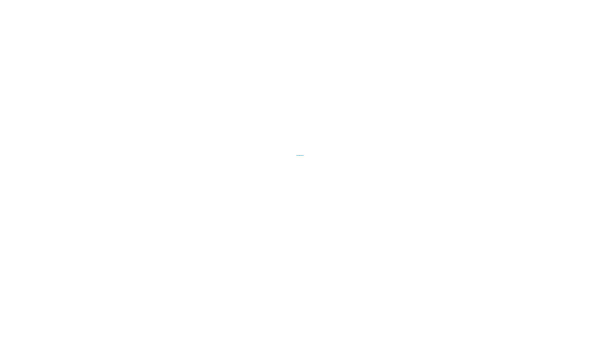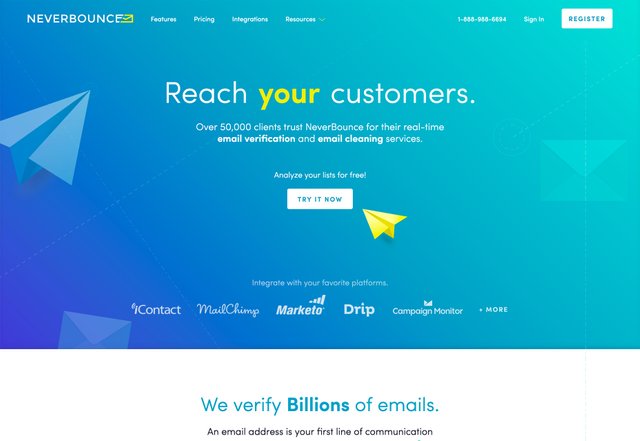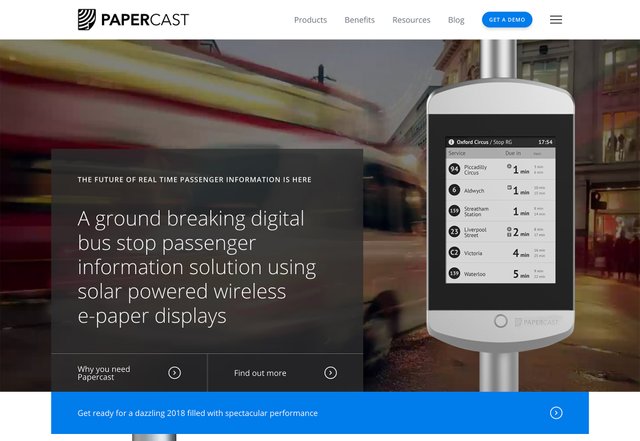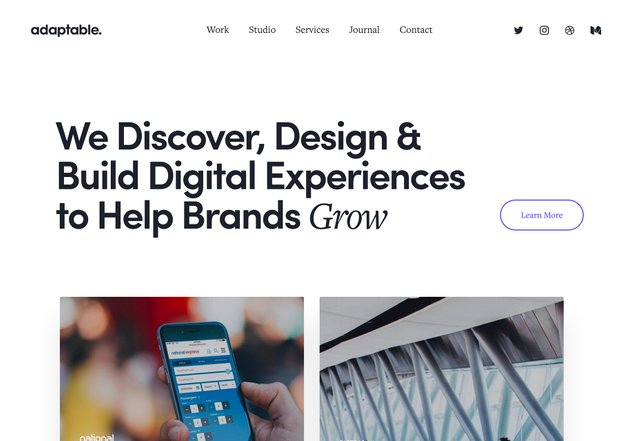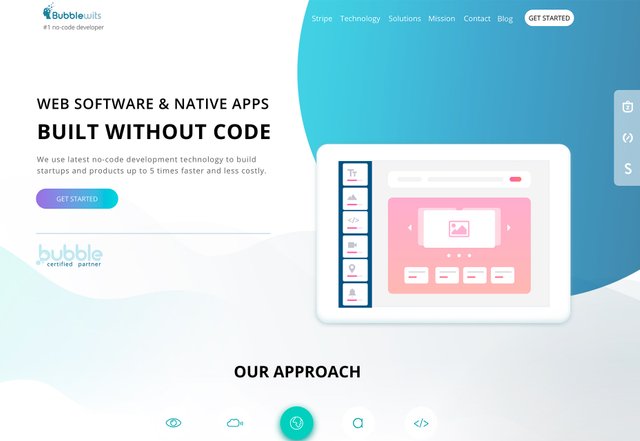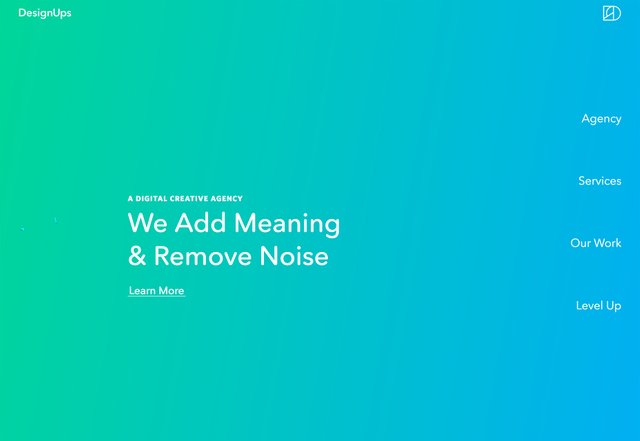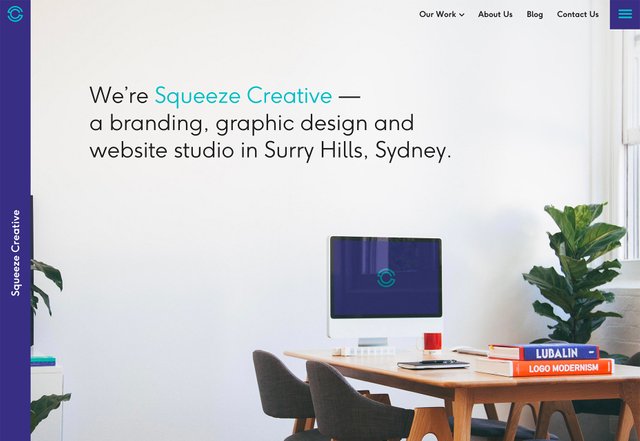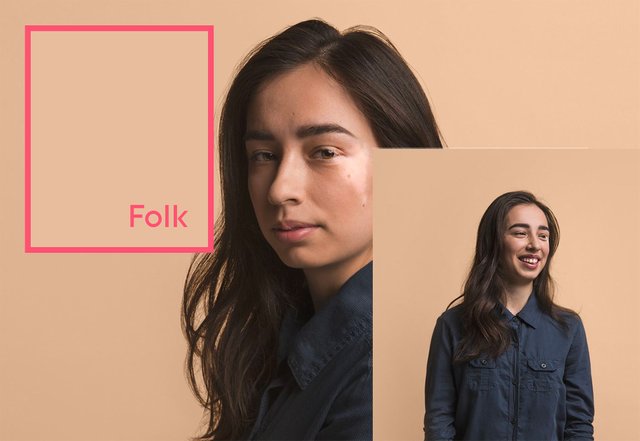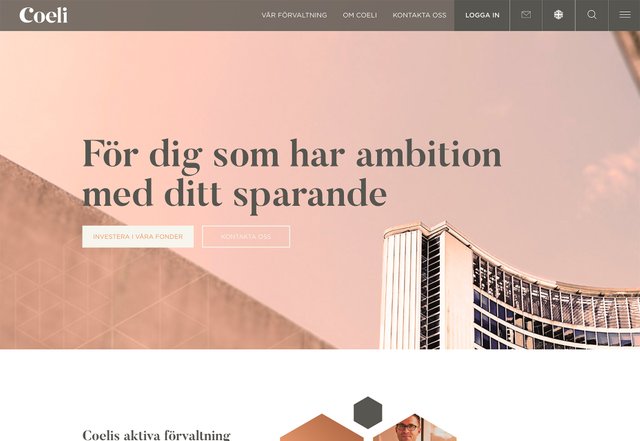3 ESSENTIAL DESIGN TRENDS, JANUARY 2018
If you are bored with everything you’ve been toying with in design projects, the start of a new year is a great time to try something new. While the end of the year, can be a slow season when it comes to web design projects, the start of the year is often when new work and concepts come to life.
It can also be the start of a few new design trends such as simple corner branding, skinny vertical sidebars and peachy color choices—all of which are popping up in plenty of projects.

1. Simple Corner Branding
Maybe it seems way too simple, but a text branding mark in the top left corner of websites has made a comeback. While some of these simple corner branding styles include a text-based mark or text and an icon, the trend is defined by streamlined elements that fall into the background.
These marks generally use simple sans serif typefaces and are white on a colored background or include a simple color element when used on light backgrounds. Black branding on a white background is equally popular. There’s an overall lack of embellishment or desire to make the logotype a focal point.
This trend seems to be popular with brands that don’t have well-established names yet—think startups or small businesses—or with website designs that are fairly elaborate. For the more involved designs, such as Papercast, the messaging and description of what the website is about is actually more important than the logo or branding itself, making this branding choice a good one.
This style of simplified branding takes a cue from mobile responsive website practices. Many responsive designs pare down logo treatments (as well as navigation) for smaller screens. This concept has lead more brands to create a second, simple logo for such uses, and now those logos are making their way into all screen sizes.
While simple corner branding can be sleek and help users focus on other parts of the design, it doesn’t go a long way to help a small business or brand establish visual recognition of the mark, logotype or symbol. Consider this when debating whether to use this website design trend or not.

2. Skinny Vertical Homepage Sidebars
While sidebars have never really fallen out of trend on interior pages or blogs, they haven’t been a mainstay on homepages. That is beginning to change.
From a place to store social media icons (such as Bubblewits) to a place for navigation or branding, super skinny vertical homepage sidebars are becoming a big deal.
Part of the credit goes to mobile device usage—it’s a vertical format—and the idea that more users are OK with scrolling and screen widths that aren’t quite to wide. There’s a great deal of eye fatigue that happens for users that switch between narrow and wide reading widths (phone and desktop screens).
To combat this, more designers are incorporating more vertical elements into the desktop, wide-screen versions of designs. In essence, more vertical elements decrease the overall width of larger screens, making the experience feel a little more like the mobile versions.
What’s great about these vertical elements is they can work in so many different ways, including for navigation and as a branding/home button.
DesignUps, uses an undefined vertical sidebar for navigation elements on the right side of the homepage. The sidebar visually blends into the background without boxing, but “shrinks” the overall width of the main messaging area.
Squeeze Creative goes with a super-thin, left sidebar that includes the company’s branding. As an added bonus, the entire sidebar is a clickable “home” button that helps users find their way if they get lost in the design.

3. Peachy Color
Ultra Violet may be Pantone’s Color of the Year for 2018, but recent website designs are bursting with peach color palettes and accents. (Thankfully, the paler, orange-ish option goes great with Ultra Violet if you want to use both trendy hues in projects.)
Peach variations include everything from colors with a more orange look to pinkish undertones to flesh-coloring. The color is warm and inviting, although some find it a bit too feminine or pastel for general use.
Meanings and emotions associated with the color include creativity, vibrancy, socialization, hunger, happiness or confidence and pride.
The most well-known peach hue is that of the Crayola crayon by the same name. You can start your own peachy palette with HEX value #FFCBA4 or RGB 255, 203, 164.
The trend uses peach for both the main color palette, such as Folk Strategies and Coli, and as an accent color in the manner of the website for the Listen Festival.
This color trend seems to be derived from the dominant color trend of the last year, which includes colors from the material palette—take a look in the deep orange variations for inspiration. While peach is not as bold or bright as some of the blues, greens and pinks that have been popular, it still evokes the same playful idea, while allowing for more flexibility in creating color contrast between elements.

Conclusion
One of the best things about the start of the year is the idea that it is a time for new beginnings. Use this to clear your design repertoire of trends and techniques that may be starting to feel a little passé, and incorporate a new trend into the mix.
Each of the trends above is rather easy to use, and the peach color palette option might be the most doable, and flexible, for the largest number of design projects. As with any trend, use it sparingly and with intention to make the most out of your new year projects.
By Carrie Cousins in https://www.webdesignerdepot.com/2018/01/3-essential-design-trends-january-2018/
